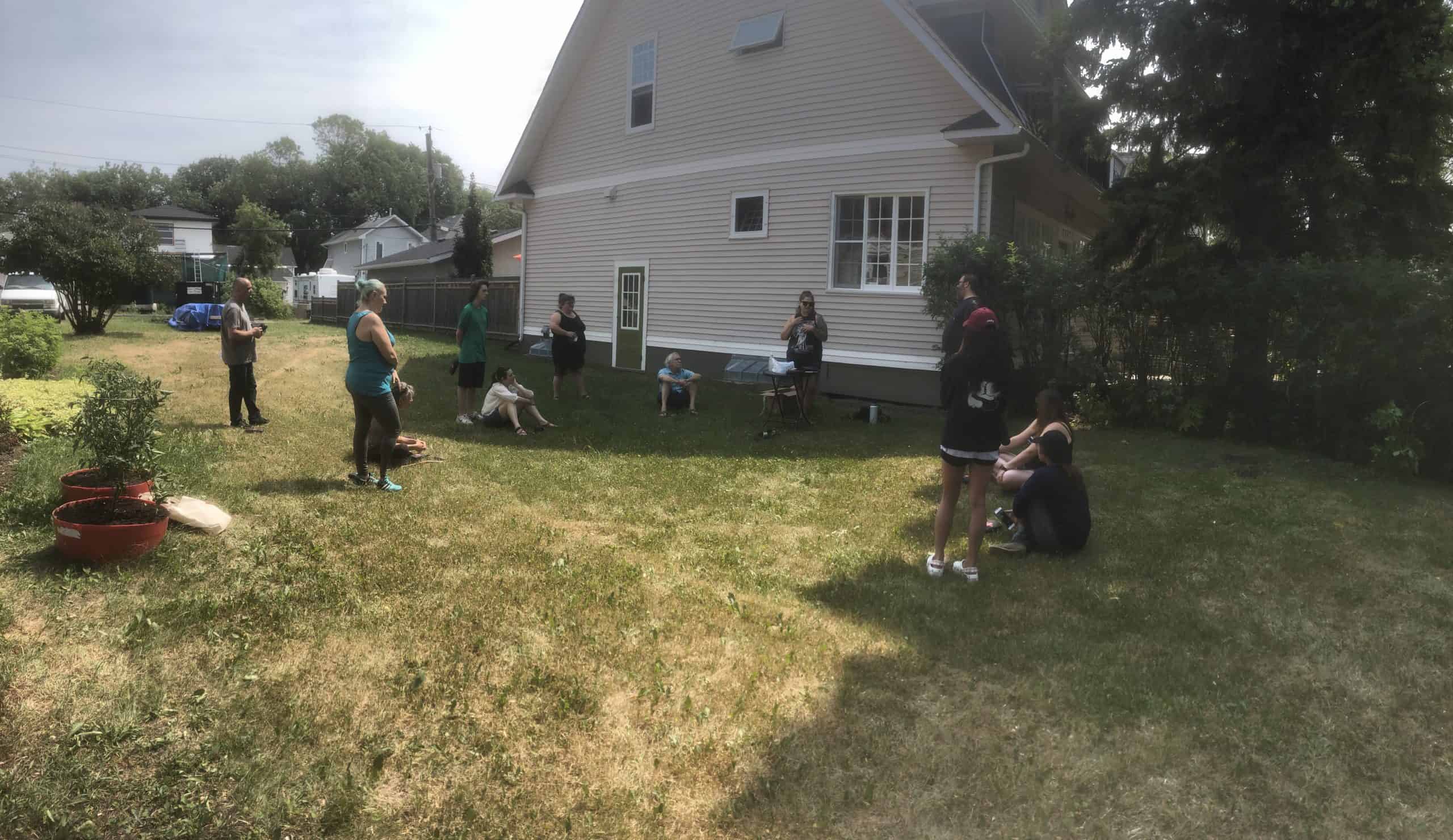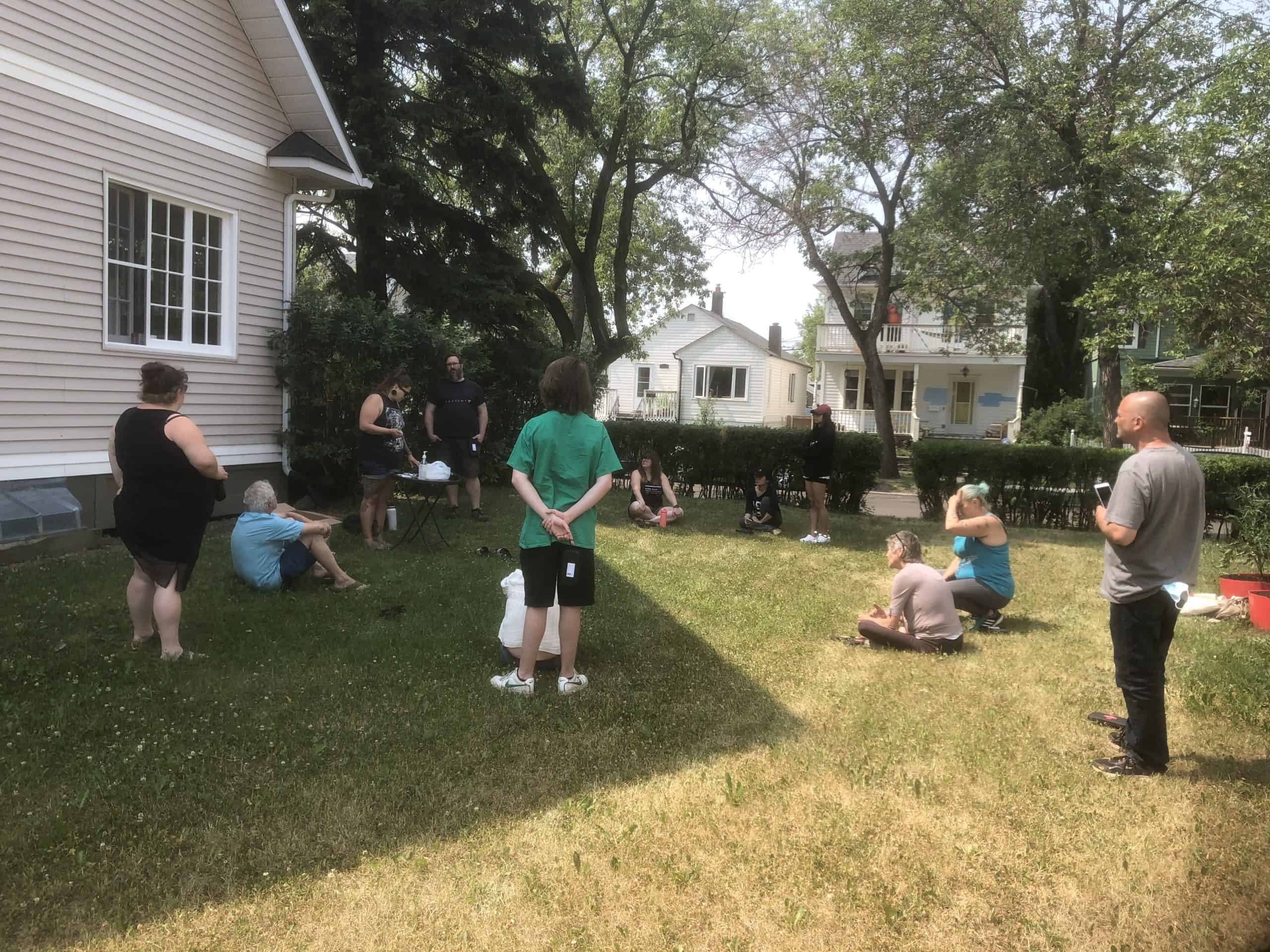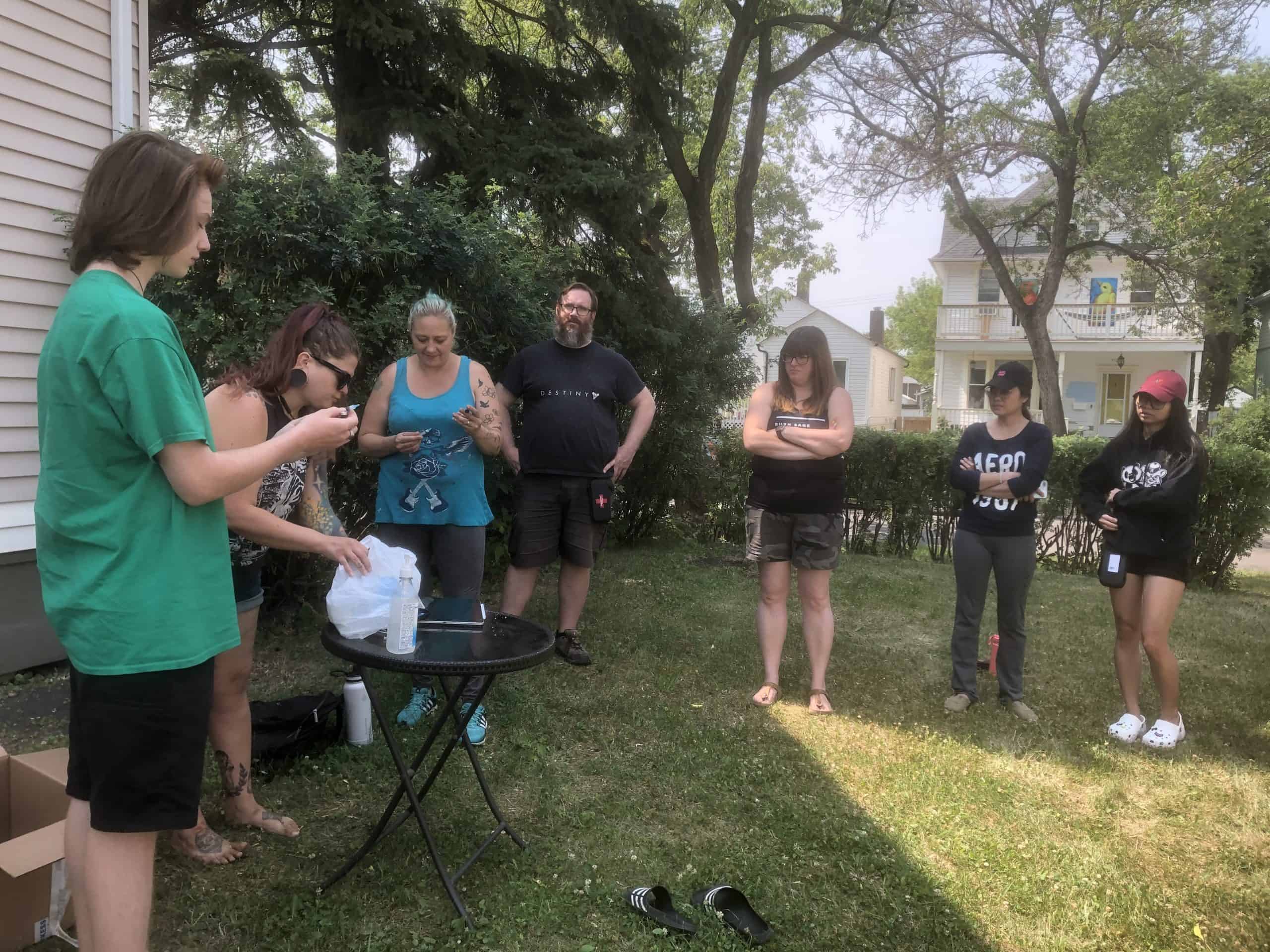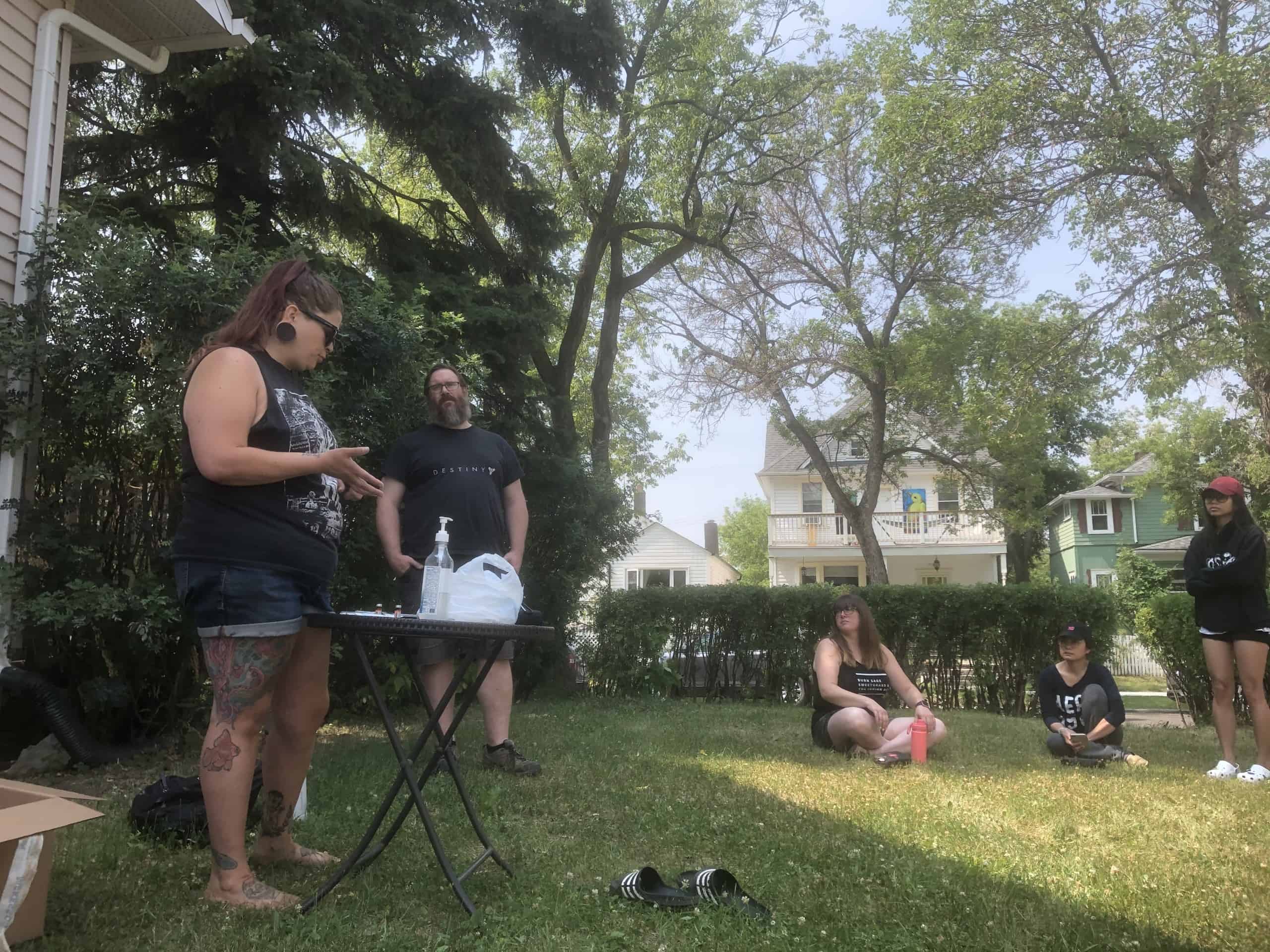Local residents get Naloxone training
Drug poisoning deaths have more than tripled since 2019. While these deaths happen all over the city, in the Rat Creek and inner-city communities the overdoses are visible on the street.
Trisia Woods, a community worker, has seen “a huge increase” in overdoses. She comments, “I see people passed completely out in alleyways every time I arrive and leave [for work]. It’s a complete crisis. I’ve never seen it this bad.”
Woods says, “The people we are helping are exhibiting symptoms we’ve never seen before. Normally it’s meth, but with this heroin they are hallucinating and completely incoherent. There are houseless folks we’ve seen regularly for years who have suddenly become quite affected. It’s really upsetting.”
In one week last month, there were three overdoses in one back alley behind 94 Street. This prompted resident Maggie Glasgow to find a way to address the issue beyond just calling 911. She reached out to the community to see if anyone would be willing to teach community members how to give life-saving Naloxone injections.
Kelsey Boychuk is a nurse, program coordinator with Alberta Avenue Community League, and a community member. She offered to provide training. Boychuk says, “I was trained by another volunteer from the Community Based Naloxone Training Program, which is a program by AHS.” Boychuk emphasizes that the training program “is designed for everyone, not specifically healthcare providers.”

About 11 people showed up for the Community Based Naloxone Training Program. | Maggie Glasgow 
The Community Based Naloxone Training Program is meant for anyone who wants to learn about injecting Naloxone. | Maggie Glasgow
During the training, Boychuck teaches people the importance of harm reduction, the signs and symptoms of an opioid crisis, and the steps to take when you come across someone having an opioid overdose. She notes, “Not everyone has handled needles, or administered medication via injection, or even reacted in a medical emergency, especially to a patient with an unknown medical history.” Boychuk’s goal is to “focus on getting comfortable handling an injection in a very high-stress situation.”
Glasgow says what they learned from Boychuk was “more in depth than we could have learned at a pharmacy.” She was pleased to learn that it is possible to give an injection through someone’s clothes and that creating a sterile environment is not the first priority in a crisis situation. She learned that the signs of an overdose are vomiting and trouble breathing, which shows up as a gurgling noise and blue lips.

About 11 residents attended the session, including 14-year-old Conall MacLellan, who within a week of taking the training came across a person who was in an overdose situation and was able to save the individual’s life.
Boychuk stresses that it’s important people know that “drug overdoses don’t just happen downtown, Alberta Ave, or whatever other neighbourhoods get labeled the same. They happen all over the city, they are just harder to spot in a basement or garage in Terwilliger. So it’s important to have a kit, and encourage the people you know to get a kit as well.”
Boychuck is offering training to community groups. Contact Kelsey Boychuk at programs@albertaave.org.







